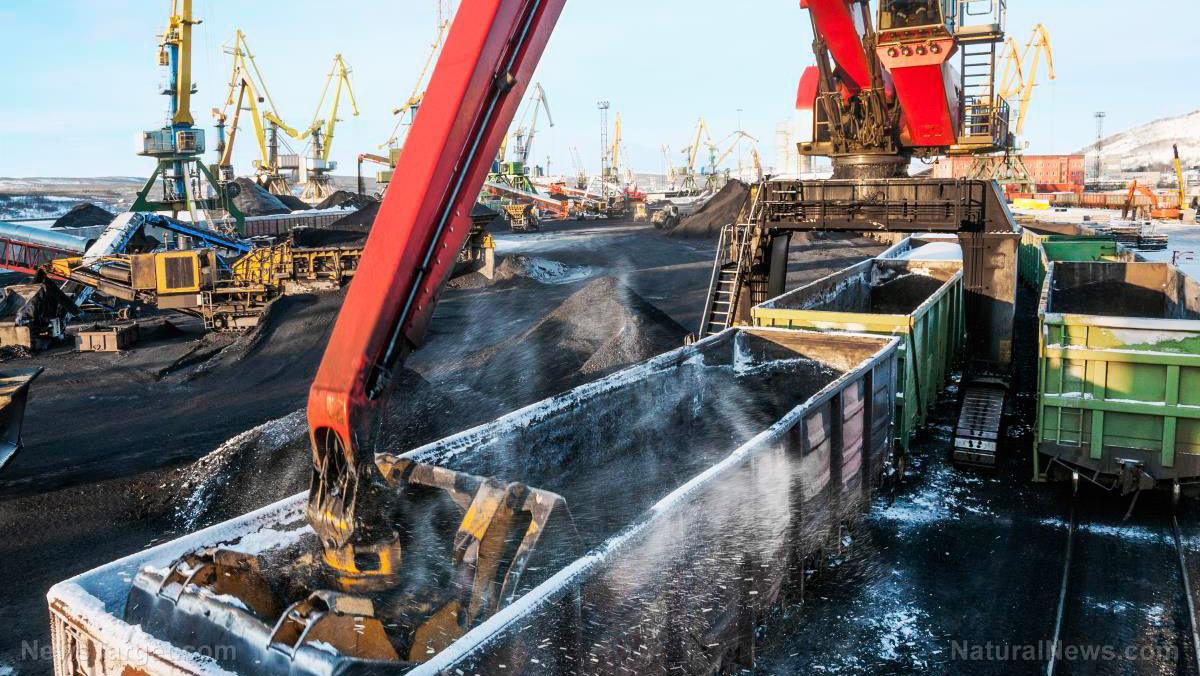Reusing carbon dioxide: Scientists capture and convert it into useful molecules
02/11/2020 / By Ralph Flores

Researchers at Michigan Technological University have developed a novel device that captures carbon dioxide (CO?) and converts it into useful products. The device, which the team presented at the Society of Mining, Metallurgy and Exploration’s annual meeting in Denver, works just like a carbon scrubber to remove CO? from flue gas emitted from power plants. But unlike other scrubbers, which industries are reluctant to implement given their high cost, Michigan Tech researchers say that this device is a “cheaper alternative.”
They also added that their device not only captures carbon but converts it into oxalic acid. A naturally occurring compound found in different types of vegetables, oxalic acid (or oxalate) is classified in nutrition science as an antinutrient, that is, a compound that binds to minerals and hinders their absorption. However, it has a wide range of uses in the industry. Oxalic acid is highly corrosive and has a bleach-like quality. In fact, many cleaning products list oxalic acid as a passive ingredient, and textile mills and factories use it to bleach and color clothing.
In mineral processing, oxalic acid is used to leach rare earth elements — such as those used in electronics like cell phones — from ore bodies. This makes it highly beneficial for the US, which does not produce rare earth elements. According to lead researcher S. Somar Kawatra, a chemical engineering professor at Michigan Tech, this allows the possibility of profitably extracting rare earth materials locally, which also helps with national security. Currently, over 90 percent of all rare earths in the world are produced in China.
Capturing CO? and turning it into C?H?O?
For the pilot-scale experiments, the researchers installed their scrubber at the Michigan Tech steam plant, which emits real flue gas. At baseline, the gas contained eight percent carbon dioxide. However, after the addition of the scrubber, emissions were brought down to four percent, with the team looking to bring it down to less than two percent.
“Below two percent, we are happy,” Kawatra said. “Below one percent, we will be very happy.”
Sriram Valluri, a doctorate student at Michigan Tech who was also part of the study, noted that they were able to bring it down to zero percent in a laboratory.
The researchers take a sample stream of flue gas from the boiler’s main exhaust line. The flue gas, which comes out of the burner, can reach temperatures up to 350 F, after which it is compressed and filtered. Afterward, the team passes the gas through a cooling unit before it enters the bottom of an 11-foot scrubbing column. As the flue gas is bubbled up toward the top, it interacts with a sodium carbonate solution (or soda ash) that is pumped into the top of the column. This removes most of the carbon dioxide from the gas. This method, according to Michigan Tech alumnus and Carbontec Energy chairman John Simmons, is significantly cost-effective. Currently, industrial applications use amine-based capture, which can cost up to $20,000 a ton. In comparison, the carbonate scrubber used by the Michigan Tech researchers costs only $200 a ton.
While the team has identified challenges in their current scrubber, they are still hopeful that developing the device further can usher in even more profitable uses for carbon. For now, a major challenge they have identified is stabilizing a fluctuating ratio of gases in the flue gas.
Team member Sam Root explained: “You need a cascade control system that measures the carbon dioxide and manipulates the amount of scrubbing solution accordingly.”
“Our next challenges are, how much can we scale the scrubber up and what can we use the carbon dioxide for.”
Sources include:
Tagged Under: carbon dioxide, cool tech, electronics, future tech, inventions, metallurgy, minerals, mining, oxalic acid, rare earth, research



















